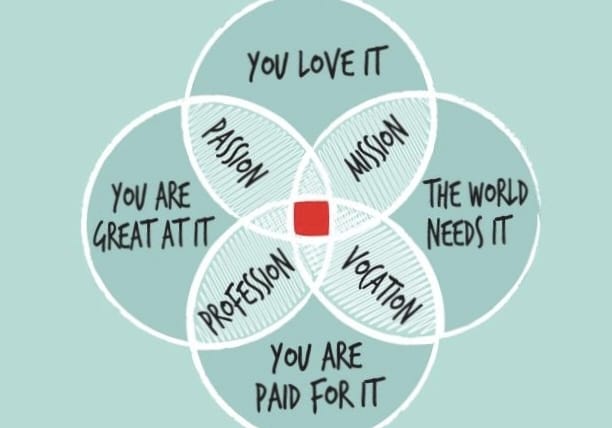Visionary Leadership: Inspiring Growth and Progress
Leadership is an essential quality that shapes organizations, societies, and even entire nations. Among the various leadership styles, visionary leadership stands out as a powerful approach that inspires and transforms. Visionary leaders are those who not only see beyond the immediate but also articulate a clear vision for the future, motivating others to align with their aspirations and work collectively toward achieving them.

Defining Visionary Leadership
Visionary leadership involves creating and communicating a compelling vision of what the future could be. It requires foresight, creativity, and the ability to inspire others to believe in and work toward a shared goal. A visionary leader doesn’t merely manage; they lead with purpose, painting a picture of success that others find motivating and attainable.
Key characteristics of visionary leadership include:
Clarity of Vision: The ability to see possibilities and articulate them effectively.
Inspiration: Encouraging and motivating people to invest in the vision.
Strategic Thinking: Mapping out steps and strategies to transform the vision into reality.
Emotional Intelligence: Understanding and connecting with the emotions, values, and motivations of others.
Adaptability: Navigating challenges and pivoting strategies while keeping the vision intact.

The Core Traits of Visionary Leaders
Foresight and Creativity
Visionary leaders are often forward-thinkers who anticipate trends and changes. They use their creativity to envision possibilities that may not yet exist. For example, Steve Jobs envisioned a world where personal computing and mobile devices were seamlessly integrated, leading to innovations like the iPhone.
Courage and Confidence
Pursuing a vision often means challenging the status quo. Visionary leaders demonstrate courage in the face of skepticism and uncertainty, exuding confidence in their ability to achieve what might seem impossible.
Strong Communication Skills
Articulating a vision is as crucial as creating one. Visionary leaders inspire by sharing their ideas in ways that resonate emotionally and intellectually. They use stories, metaphors, and relatable examples to make their vision compelling.
Empathy and Emotional Intelligence
Visionary leaders connect with their teams on a personal level. They understand the aspirations, concerns, and motivations of their followers, which helps in aligning individual goals with the collective vision.
Persistence and Resilience
The road to realizing a vision is rarely smooth. Visionary leaders persevere despite setbacks, maintaining their focus and determination. Their resilience inspires others to stay committed during challenging times.
The Role of Visionary Leadership in Organizations
Visionary leadership can drive transformation in several ways:
- Creating a Unified Direction
Visionary leaders provide clarity, which helps align teams and resources toward a common goal. For instance, a CEO with a clear vision for sustainable practices can inspire a company-wide shift toward eco-friendly operations. - Encouraging Innovation
By thinking beyond conventional boundaries, visionary leaders foster a culture of innovation. They encourage teams to take calculated risks and experiment, knowing that progress often comes from trying new approaches. - Building a Motivated Workforce
A shared vision creates a sense of purpose. Employees who see their work as contributing to a greater goal are more engaged and motivated. - Driving Long-Term Success
Visionary leadership focuses on sustainable growth. Instead of short-term gains, such leaders prioritize building systems, processes, and cultures that ensure lasting success.

Examples of Visionary Leaders
Elon Musk
Musk’s vision of a sustainable future has driven the success of Tesla and SpaceX. His bold ideas—like colonizing Mars or creating a global network of renewable energy sources—have inspired industries to innovate.
Mahatma Gandhi
Gandhi’s vision of an independent India built on nonviolence united millions in a shared purpose. His leadership changed the course of history and demonstrated the power of vision in social movements.
Jeff Bezos
The founder of Amazon envisioned a customer-centric approach that would revolutionize global commerce. His focus on long-term growth has made Amazon a leader in e-commerce, cloud computing, and beyond.
Oprah Winfrey
Oprah’s vision of creating a platform for storytelling and empowerment has reshaped media. Her leadership style is rooted in authenticity and a commitment to uplifting others.
Challenges of Visionary Leadership
While visionary leadership is powerful, it is not without its challenges:
Resistance to Change
People often resist new ideas, especially when they disrupt established norms. Visionary leaders must overcome skepticism and build trust.
Execution Gaps
Turning a vision into reality requires detailed planning and effective execution. Leaders must balance big-picture thinking with practical steps.
Balancing Innovation and Feasibility
A vision must be ambitious but also achievable. Leaders risk losing credibility if their ideas are too far-fetched or disconnected from current realities.
Sustaining Momentum
Maintaining enthusiasm for a vision over time can be difficult. Leaders need to celebrate milestones and keep the energy alive.

Becoming a Visionary Leader
To cultivate visionary leadership:
Develop a Growth Mindset
Embrace learning and remain curious. Stay informed about trends, challenges, and opportunities in your field.
Refine Your Vision
Spend time reflecting on what you want to achieve. Seek feedback from trusted advisors to sharpen your ideas.
Enhance Communication Skills
Learn to convey your vision with clarity and passion. Use visuals, stories, and data to make your message resonate.
Empower Others
Visionary leaders know they cannot achieve their goals alone. Foster collaboration and empower others to contribute their skills and ideas.
Stay Resilient
Challenges are inevitable. Build resilience by focusing on your purpose and staying adaptable.
Lead by Example
Inspire others by living your values and demonstrating commitment to your vision.
Visionary leadership is not merely about having big dreams—it’s about turning those dreams into reality by inspiring others to join the journey. By combining foresight, emotional intelligence, and the ability to execute, visionary leaders drive progress, innovation, and positive change. As the world faces new challenges and opportunities, the need for such leadership has never been greater. Whether in business, politics, or social movements, visionary leaders pave the way for a brighter and more inclusive future.
https://nimblefoundation.org/
https://www.linkedin.com/in/satish-kakri-17224417/
https://www.facebook.com/nimblefoundation1
https://x.com/nimblecoach
Thanks for reading.











































